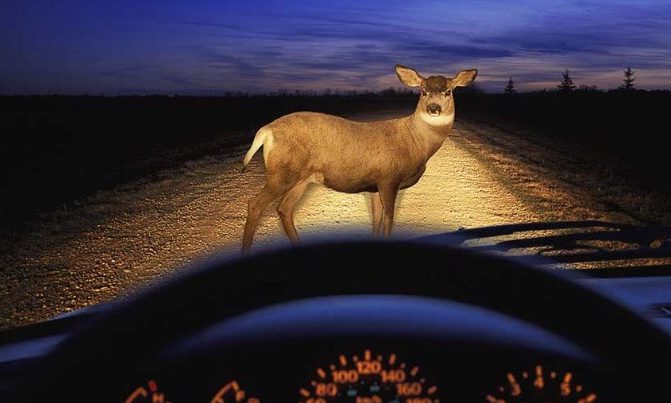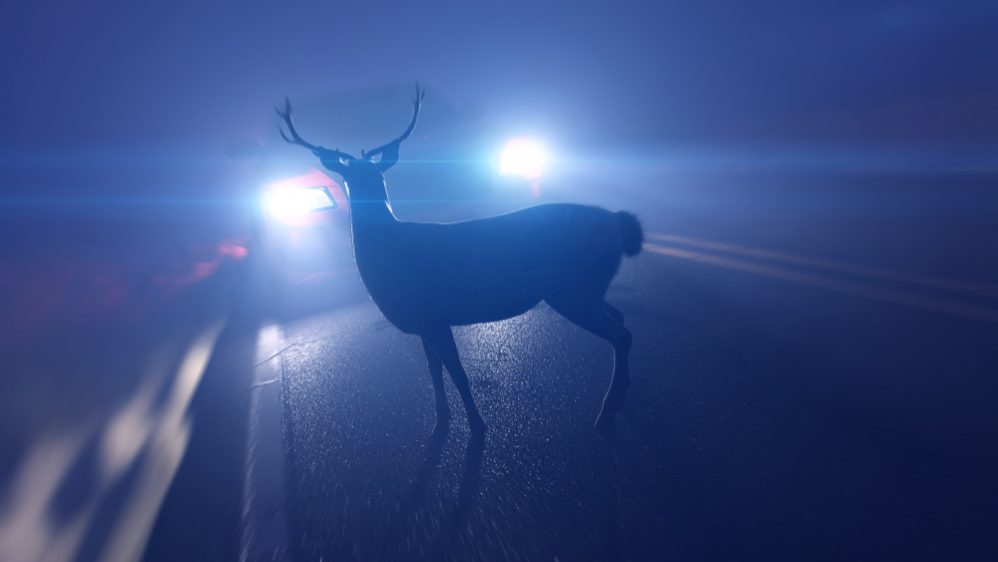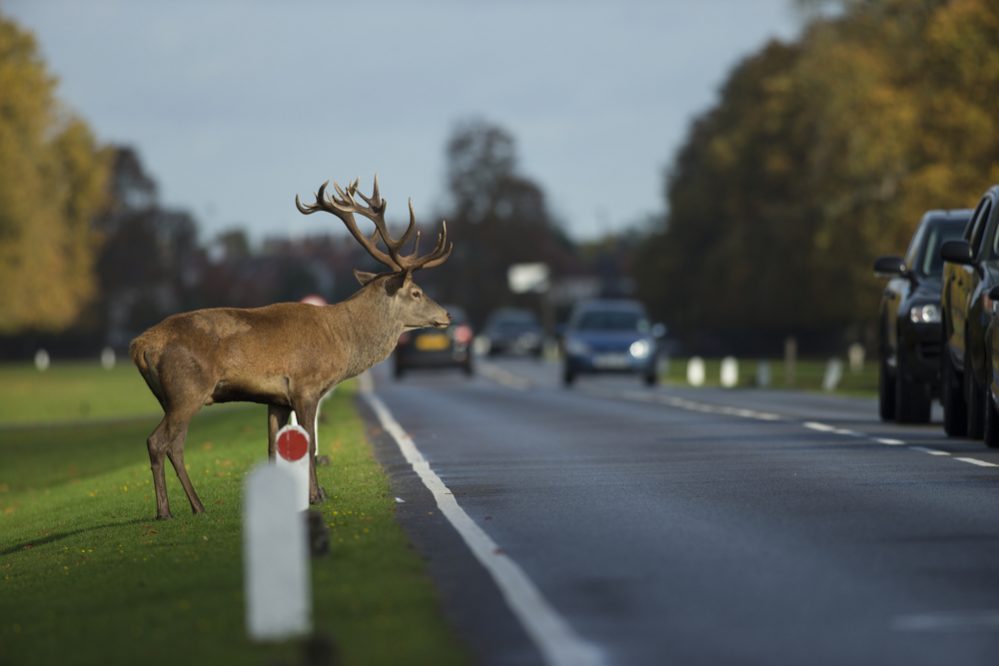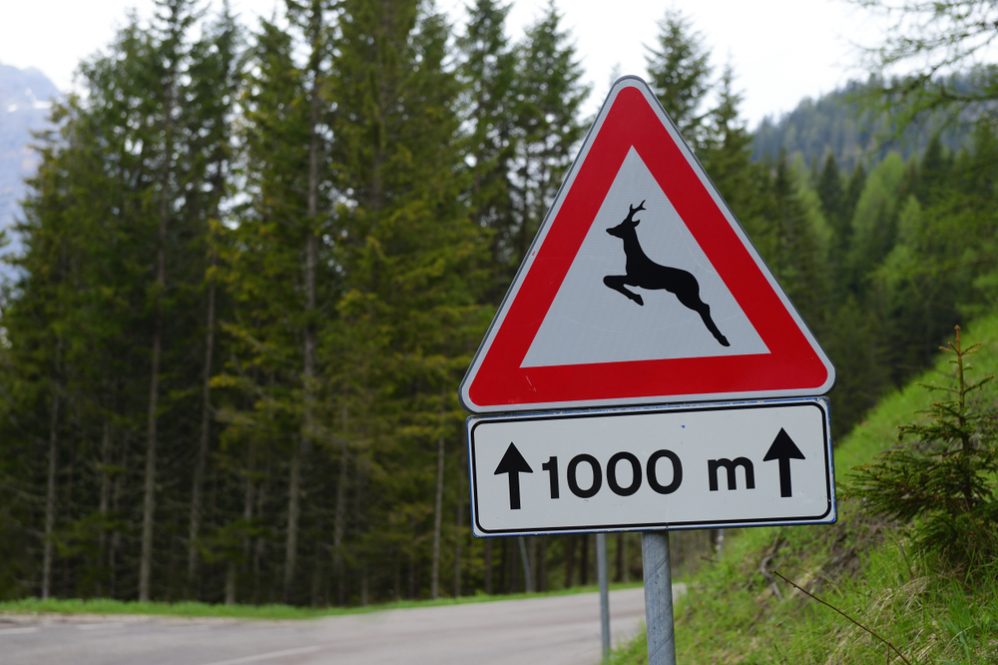Cars + Deer = Trouble
Each year there are approximately 500,000 deer/auto collisions resulting in over 100 deaths and thousands of injuries. Each deer/auto collisions cost the auto insurance industry about $2,000 according to the Insurance Information Institute.
The recent explosion in the deer population has lead to a dramatic increase in deer/car collisions. In the 1980s the deer population was approximately 10 million. Today, there are more than 25 million. Losses due to deer and car encounters will only increase as the deer population continues to grow and urban habitats encroach upon rural environments.
Defensive driving tips to avoid hitting a deer
- Be vigilant in early morning and evening hours, the most active time for deer.
- Use your high-beam headlights, which reflect in the deer’s eyes, to see the deer better.
- Slow down and blow your horn with one long blast to frighten the deer away.
- Brake firmly when you notice a deer in or near your path. Do not swerve. It can confuse the deer as to where to run. It can also cause you to lose control and hit a tree or another car.
- Be alert and drive with caution when you are moving through a deer crossing zone.
- Always wear your seat belt. Most people injured in car/deer crashes were not wearing their seat belt.
- Look for other deer after one has crossed the road. Deer seldom run alone.
If your vehicle strikes a deer, do not touch the animal. The frightened animal, in attempting to move, could hurt you or itself. The best procedure is to get your car off the road, if possible, and call the police. When you get home, contact your insurance agent or company representative and report the incident. Collision with an animal is normally covered under the comprehensive portion of your auto insurance policy.
Hornet Deer Avoidance Device
The XP3 Corporation of Oregon manufactures the Hornet product line of deer avoidance devices that they claim may help reduce the risk of animal/vehicle collision by more than 70%. They state: “The use of the Hornet, along with driver awareness[emphasis added], has been proven to reduce the risk of animal/vehicle collision by more than 70%.
The Hornet is a precision-tuned sonic generator which produces a high-pitched, directional sonic wave. When this wave is reflected from the road surface of a moving vehicle, a virtual sonic echo effect is produced. This sonic wave has proven its ability to alert deer and most other animals to approaching vehicles with sufficient warning to avoid costly accidents.”
What can you do to avoid hitting an animal?
Collisions with animals, particularly deer, represent more than four percent of all crashes in the United States and killed 111 people in 1995 according to data from the National Highway Traffic Safety Administration’s Fatal Accident Reporting System (FARS), so the Foundation decided to look into this issue further. An analysis of state data from Alabama showed that the most dangerous times of day for deer-related crashes are in the early evening and early morning — the most active time for deer. The most dangerous time of year is during the mating season, in November and December. While FARS reported 275,000 collisions with animals in 1995, the Insurance Information Institute, a New York based group that looks into various insurance-related issues, estimates that there are 500,000 collisions each year with deer alone, each costing the insurance industry approximately $2,000 per claim. According to the I.I.I., the deer population has swelled from approximately 10 million in the 1980s to more than 20 million today.
So, what can you do to avoid hitting an animal yourself? First, pay attention to animal crossing signs. They’re probably there because other motorists have had crashes in the area. Also, obey the speed limit and keep a close watch for deer around dusk and at dawn. Don’t over-drive your headlights at night — i.e., control your speed so that you will have time to react to something when it appears in your headlights. If you see a deer in the road, honk your horn — flashing your lights might cause the animal to further fixate on your vehicle. Keep in mind that if you think you are going to hit the animal, it’s often better to brake than to swerve. Swerving can confuse the animal as to which way to run and possibly result in a worse collision with a fixed object such as a tree or an oncoming vehicle.
What kind of vehicles are most often involved in animal-related crashes? According to statistics culled from the University of Alabama’s Crash Analysis Reporting Environment (CARE), automobiles are involved in about 61 percent of the crashes followed by pickup trucks, which are involved in 26 percent of crashes. Vans are involved in 7 percent, while tractor trailers are involved in only two percent.
| Reported Crashes Involving Animals in Alabama, 1995, by Month of Crash | ||
| Month | Crashes |
Percentage |
| December | 406 | 16.0 |
| November | 334 | 13.1 |
| January | 286 | 11.2 |
| October | 233 | 9.2 |
| September | 218 | 8.6 |
| February | 184 | 7.2 |
| April | 170 | 6.7 |
| March | 155 | 6.1 |
| May | 152 | 6.0 |
| July | 146 | 5.7 |
| August | 146 | 5.7 |
| June | 116 | 4.6 |
| TOTALS | 2546 | 100.0 |
Research compiled by the AAA Foundation for Traffic Safety, 1996



